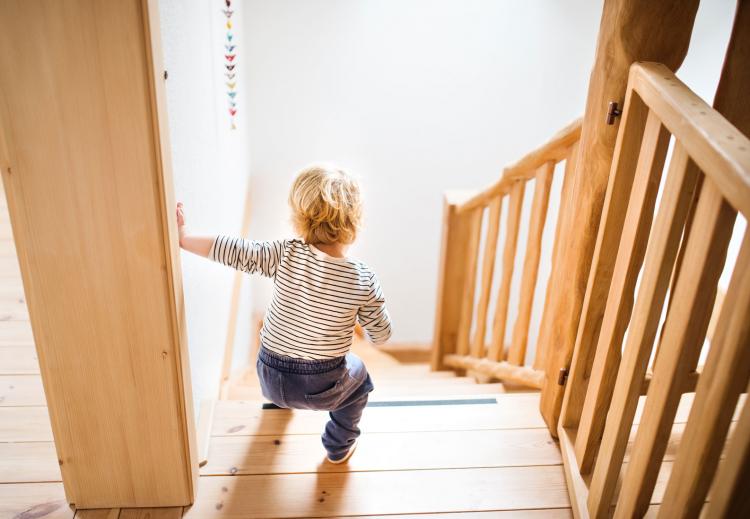
Kids will be kids...
Sleep patterns, social life, routine, wardrobe… Everything seems to change in an instant when you have children as you adapt to the new family way of life.
One of the biggest and often trickiest changes is turning your previously adult-orientated home into a safe space for young ones. As babies learn to grasp, crawl and walk, there’s no doubt that they’ll start to explore the home and everything in it. You want to keep them safe at all costs, and yet the home offers all kinds of hazards that they need to be protected against.
Among these includes covering up plug sockets to protect their fingers, lockable cupboards for hazardous materials and, of course, safeguarding your stairs.A slight slip or fall could result in severe injury for your toddler. In the UK each year, there are more than 42,000 Accident and Emergency attendances by the under-five age group resulting from accidental falls on stairs (reported by RoSPA).
So, how do you ensure your child doesn’t fall victim to stair-related injuries? What options are there available for parents who want to keep crying and knee abrasions to a minimum on the journey between floors? This articles contains a number of tips that will help you and your family in baby proofing your staircase:
1 - Fix Stair Gates to Restrict Access
Stair gates at the top and bottom of stairs are a natural choice for restricting children from climbing the stairs unattended and therefore preventing accidents. Modern staircase designs can sometimes complicate the use of stair gates so finding one that fits properly can be a matter of trial and error. It’s important that the gates are robust, are high enough so that your toddler can’t climb over them and that they are fixed securely so that they can’t be pushed or pulled out of place. Refer to the video below for more information on stair gate installation:
If you’re overwhelmed with choice and unsure what type of stair gate you need, please refer to the below table for the advantages, disadvantages and best for of each type:
| Stair Gate Type | Advantages | Disadvantages | Suitable For x Scenario |
| Foldable Gate |
|
|
|
| Roller Gate |
|
|
|
| Pressure Gate |
|
|
|
| Wall Mounted Gate |
|
|
|
2 - Add Carpet or Non-slip Paint or Varnish to the Treads to Make Them Less Slippery
If you currently have a wood or laminate stair treads, it may be worth considering carpet instead. Your child’s feet are much less likely to slip on carpet than they are on wood, and when they do fall, a carpeted staircase will make for a much softer landing. If carpet is out of the question, applying non-slip paint or varnish (such as Blackfriar Anti-Slip Floor Paint) to the treads will do the trick.
3 - Clear Stair Clutter
Books, toys, and clothing on the stairs can be potential hazard. These items could result in serious injuries once tripped over. In fact, they aren’t just dangerous to your child but also to you as a parent. It’s important that you remove any items that you might be storing on the stairs; keep your stairs clear and free of clutter to avoid accidents.
4 - Light Up Your Stair Area
If you can’t see the steps on your staircase, then you run the risk of taking the wrong step. Make sure that your stair area is well-lit, without excessive glare or shadows.
Top tip: It is also a good idea to install light switches at both the top and the bottom of the stairs. This means no matter which floor of the house you are on, you can turn the staircase lights on and off.
5 - Always Inspect Your Staircase for Damage
Keeping your staircase in good overall condition will help prevent potential accidents. Ensure your stair balustrade is firmly secure, there are no broken treads and no exposed nails.
Replacing your stair balustrade has never been easier. You can find all the Timber Stair Parts that we stock here on our website.
Final Thoughts
No matter how hard you try to family proof your home, you can guarantee that your child will have the uncontrollable urge to explore different places around the house and find trouble in the least likely of places. However, by following the above baby proofing tips you can ensure that your staircase is as safe as possible allowing your child to explore their environment without being exposed to the risk of getting injured.
